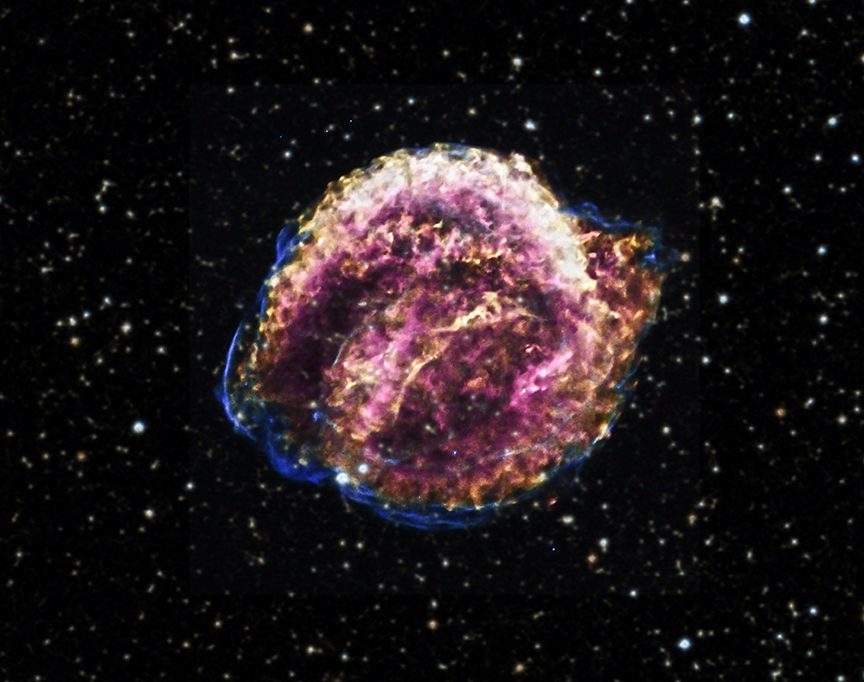Before scientists had subtweets and call-out posts, natural philosophers had treatises where they could still mock each other’s ideas and opinions. It turns out that Galileo Galilei – father of the modern scientific method – conducted a few using pseudonyms. Now, researcher Matteo Cosci has found evidence to attribute another one to the iconic Italian scientist.
To understand the context of the discovery, we need to metaphorically travel back in time about 418 years. For over 17 centuries, thanks to the influence and power of the Catholic Church, people believed the Aristotelian-Ptolemaic view of the universe: Earth is at its center and the stars are fixed to the vault of heaven. But in 1604, a stella nova (new star) – what we now call a supernova – was seen.
The object is named after Johannes Kepler, who wrote about the observations in his book, De Stella nova in pede Serpentarii (On the new star in Ophiuchus’s foot).
Composite view (X-ray and visible light) of Kepler’s supernova. Image credit: X-ray: NASA/CXC/SAO/D.Patnaude, Optical: DSS
But the first person to record the observations in Europe was philosopher Lodovico delle Colombe, a staunch Aristotelian who believed that the supernova was not new, it had always been there but wasn’t always visible. Galileo did not believe that to be the case and decided to take delle Colombe to task with a treatise called “Le Considerazioni Astronomiche di Alimberto Mauri” – The Astronomical Reflection of Alimberto Mauri.
Who is Alimberto Mauri? But of course, it’s Galileo. The attribution has been suspected for a long time but the clearest link between this treatise and the scientist was a letter signed by Galileo himself talking about the piece. Unfortunately, that turned out to be a forgery, created in the 1900s by serial forger Tobia Nicotra. So while it appeared obvious the work was by Galileo, it couldn’t be proven, until now.
Cosci, from the Università Ca’ Foscari Venezia, looked at notes that Galileo wrote around the time and was struck by a particular one where the scientist complains that delle Colombe spoke with contempt of him. Cosci searched the text by delle Colombe and noted that Galileo is never named. Alimberto Mauri, however, is named, as is a certain Cecco (another pseudonym used by Galileo was Cecco da Ronchitti), as well a reference to “a certain doctor in Padua” – where Galileo was teaching and working. Cosci concluded the note is Galileo himself confirming that he was the author.
So why use a pseudonym? It was certainly not to avoid the scrutiny of the Church, which will happen later. It was actually to look for a new patron, no longer in the Venetian Republic but in Rome itself. Venice and the Papal state were at war and Galileo couldn’t be too open about job hunting with the enemy… but he did dedicate the discussion to the treasurer of the pope himself.
The Considerazioni Astronomiche adds to the already vast literature by Galileo. In it, he discussed the new star, mountains on the Moon, and attempts to explain the motion of bodies in space. These are some of the foundations from where his astronomical observations would go forth to challenge the view of the universe that has been accepted for almost 2,000 years.
Source Link: Galileo Used A False Name To Mock The Astronomical Claims Of Another Philosopher
